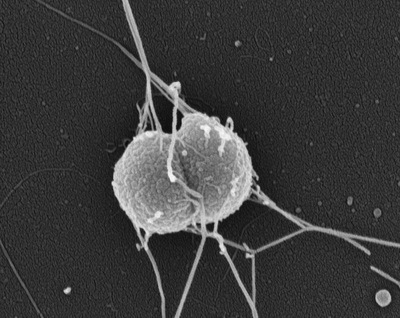Scientists led by Rob Nicholas, PhD, at the UNC School of Medicine show how the gonorrhea bacterium resists last-resort antibiotic ceftriaxone while maintaining a robust growth rate.

CHAPEL HILL, NC – The bacterium that causes the sexually transmitted disease gonorrhea is resistant to multiple standard antibiotics and now threatens to develop resistance against ceftriaxone, which is on the World Health Organization List of Essential Medicines and is the last effective antibiotic against the organism. UNC School of Medicine researchers have identified mutations to the bacterium Neisseria gonnorrhoeae that enable resistance to ceftriaxone that could lead to the global spread of ceftriaxone-resistant “superbug” strains.
The findings, published in the journal mBio, provide unique insights into the evolution of drug-resistant gonorrhea that should be useful in monitoring the disease and perhaps in defending against it.
“The first step in stopping a drug-resistant bacterium is figuring out how it becomes resistant to antibiotics that once were able to kill it,” said study co-senior author Robert Nicholas, PhD, professor and vice chair of UNC’s Department of Pharmacology. “Our results give us clues to how ceftriaxone-resistant gonorrhea is emerging, why this is such a looming problem, and what to focus on to limit it.”
